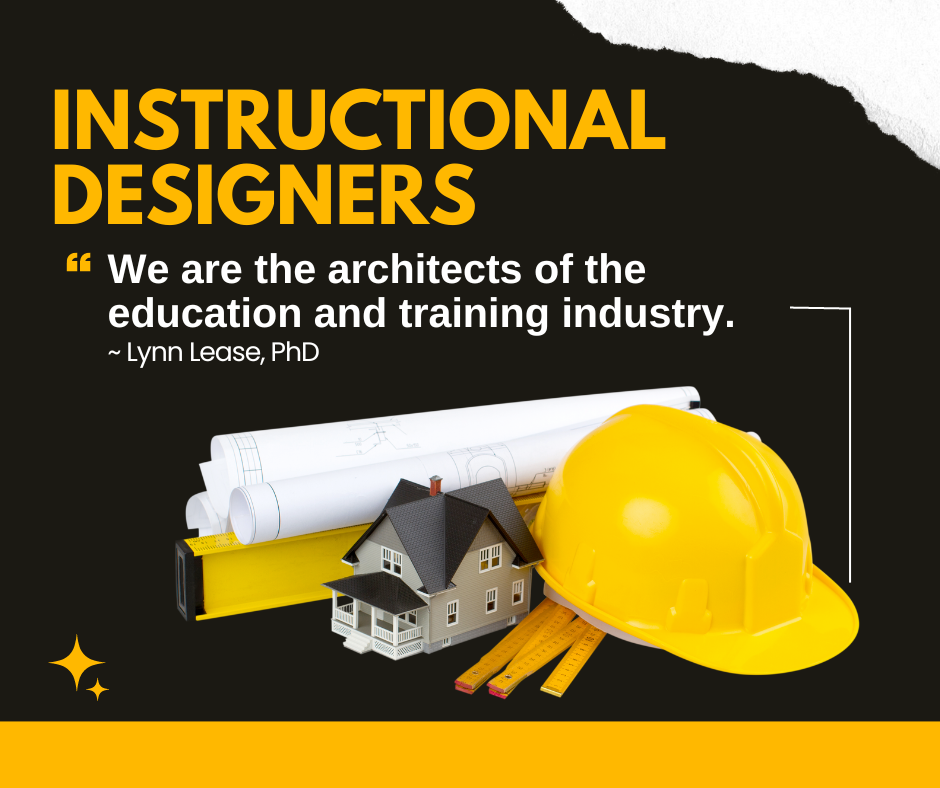
People often ask me what I do as an instructional designer. Early in my career, most of my answers incited questions and confusion.To help me explain what we instructional designers do, I crafted an answer that typically satisfies the curiosity and seems to make sense to most.
So what do instructional designers do?
Instructional designers are the architects of the education and training industry. We are the creators behind the training and education that trainers and teachers deliver.
Let’s dig deeper into this analogy of instructional designers as architects.
We use a design process.
Both architects and instructional designers follow a design process to create products and solutions. We both gather information, conduct analyses, develop concepts, create prototypes, refine designs, and iterate based on feedback. Both professions involve both science and art for a creative problem-solving approach to design solutions that meet specific needs of specific users.
We are focused on the users.
Both architects and instructional designers use a user-centered approach. We both consider the needs, preferences, and goals of the end users in the design processes. Architects create spaces that are functional, visually appealing, and suited to the needs of the occupants. Instructional designers create learning experiences that are inviting and engage and support learners in achieving their educational objectives.
We seek a balance of aesthetics and functionality.
Architects and instructional designers both strive for a balance between aesthetics and functionality. Architects aim to create visually pleasing buildings while ensuring that they meet safety, structural, and operational requirements. Instructional designers design learning spaces, materials, and experiences that are visually appealing and engaging, while also ensuring that they effectively convey the intended educational content.
We use foundational and emerging technologies.
Both architects and instructional designers employ technology in their work. Architects use computer-aided design software to create detailed blueprints, 3D models, and virtual walkthroughs of their designs. Instructional designers utilize various educational technologies, such as learning management systems, multimedia authoring tools, and e-learning platforms, to design and deliver instructional materials.
We focus on collaboration and communication.
Architects and instructional designers often work as part of multidisciplinary teams. We both collaborate with clients, subject matter experts, engineers, contractors, and other stakeholders to gather input, exchange ideas, and ensure the successful implementation of designs. Effective communication and teamwork are essential in both professions.
We iterate, evaluate, and test.
Architects and instructional designers engage in an iterative design process. We both create prototypes, gather feedback from stakeholders, make revisions, and refine designs based on evaluation and testing. This iterative approach allows for continuous improvement and ensures that the final design meets the desired objectives.
To all my fellow instructional designers out there, feel free to use my analogy as your answer the next time you are asked what you do. And, if you are not an instructional designer but are now intrigued by the work we do, join us! Southern Nazarene University offers a Master of Science in Instructional Design Technology degree program that can support you in becoming a successful architect of the education and training industry.












